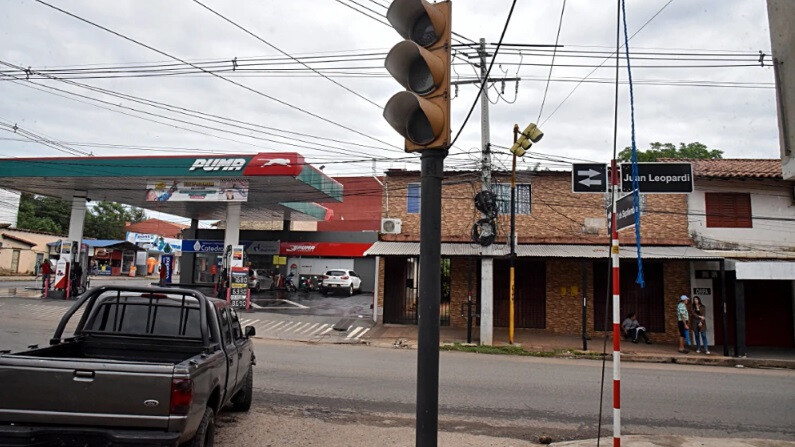
Fernando de la Mora, Paraguay – A pervasive issue of malfunctioning traffic signals across key arteries of Fernando de la Mora is escalating anxieties among motorists and pedestrians alike, posing a significant threat to public safety. An on-the-ground assessment reveals a worrying trend of absent or defective traffic lights at numerous high-traffic intersections, transforming routine commutes into hazardous navigations.
The escalating frequency of near-misses and reported accidents has galvanized local residents, who are now vociferously demanding urgent intervention from municipal authorities, specifically the installation of new and reliable traffic control systems.
The junction of Leopardi Street and September 11th Street has emerged as a particularly perilous zone. Angélica Aguilera, a concerned resident, articulated the community's distress, stating, "For approximately ten days, the traffic lights have been completely inoperative, creating an exceptionally dangerous environment. Tragically, an accident occurred just last week, underscoring the severity of the situation. Given the already high speeds at which vehicles traverse this intersection, the absence of functional signals necessitates extreme vigilance. This poses a significant impediment and safety risk for pedestrians, particularly during peak commuting hours." Alarmingly, all three traffic lights intended to regulate this critical intersection are currently out of service.
A similar scenario of infrastructural neglect is unfolding at the intersection of Fernando de la Mora Avenue and Zavala Cué Street. Here, one traffic light stands as a silent sentinel, entirely dark, while its counterpart remains stubbornly fixed on a perpetual green, offering no effective traffic management.
Further along Fernando de la Mora Avenue, at its intersection with Pérez Uribe Street, the situation remains equally precarious. One traffic signal is visibly damaged and abandoned, while the remaining light flickers erratically on yellow. Pablo Domínguez, a commuter who regularly navigates this chaotic junction, voiced his exasperation: "These traffic lights have been a persistent source of disruption, malfunctioning almost daily. The situation has become intolerable, forcing us to gamble with our safety each day. The lack of decisive action from the authorities is unacceptable and directly contributes to daily delays and tardiness."
The problem extends beyond isolated intersections, impacting vital thoroughfares connecting Fernando de la Mora with neighboring municipalities. The intersection of Avelino Martínez Avenue and Leopardi Street, a crucial link to San Lorenzo City, presents a stark visual testament to the ongoing negligence. Here, only the skeletal remains of three traffic light poles stand, devoid of any signaling apparatus.
Area drivers report that the previous, dilapidated traffic lights were dismantled by the city council, yet no replacements have materialized. Daniel Burgos, who works in the vicinity, expressed his frustration: "The municipality assured us that new traffic lights would be installed, but we have seen no progress whatsoever. Thousands of vehicles traverse this route daily, resulting in utter pandemonium. The absence of traffic police further exacerbates the chaos, leaving drivers to their own devices."
In the northern sector of the city, the intersection of Mariscal López Avenue and Cerro Porteño Street remains a notorious bottleneck due to persistently faulty traffic lights. This critical junction on a major artery leading into and out of Asunción experiences chronic congestion. Local residents lament the cyclical nature of these failures, describing it as an "endless problem" that inflicts significant delays and frustration on commuters traveling to and from the capital, particularly during peak hours.
The escalating crisis underscores the urgent need for the Fernando de la Mora municipal authorities to prioritize the repair and replacement of these vital traffic control systems to ensure the safety and efficient flow of traffic for all residents and commuters. The lack of prompt action is not only fostering an environment of heightened anxiety but also increasing the likelihood of further accidents on the city's increasingly perilous roadways.
[Copyright (c) Global Economic Times. All Rights Reserved.]






























